Want to learn dart board how to play? This guide will quickly teach you the basics, from setting up your dartboard to understanding scoring. We’ll cover everything you need to know to start playing and enjoying darts, including proper setup, rules, scoring, basic strategy, and more!
⚠️ Still Using Pen & Paper (or a Chalkboard)?! ⚠️
Step into the future! The Dart Counter App handles all the scoring, suggests checkouts, and tracks your stats automatically. It's easier than you think!
Try the Smart Dart Counter App FREE!Ready for an upgrade? Click above!
Understanding Your Dartboard: A Beginner’s Guide
Before you can start playing, it’s crucial to understand the anatomy of a dartboard. Most dartboards are made of sisal fibers tightly packed together. This allows the darts to stick easily and the board to heal when the darts are removed.
Key Sections of the Dartboard
- The Double Ring: The outer ring of the board. Hitting a section in this ring doubles the point value of that section.
- The Treble Ring: Found halfway between the bullseye and the double ring. Hitting a section in this ring triples the point value of that section.
- The Bullseye: The center of the board. The outer bullseye (green) is worth 25 points, and the inner bullseye (red), also known as the ‘double bull’ or ‘bull’, is worth 50 points.
- The Number Sections: The remaining sections, each representing a number from 1 to 20.
- The Wire Spider: The wire framework that divides the board into sections. If a dart hits the wire, it doesn’t score.
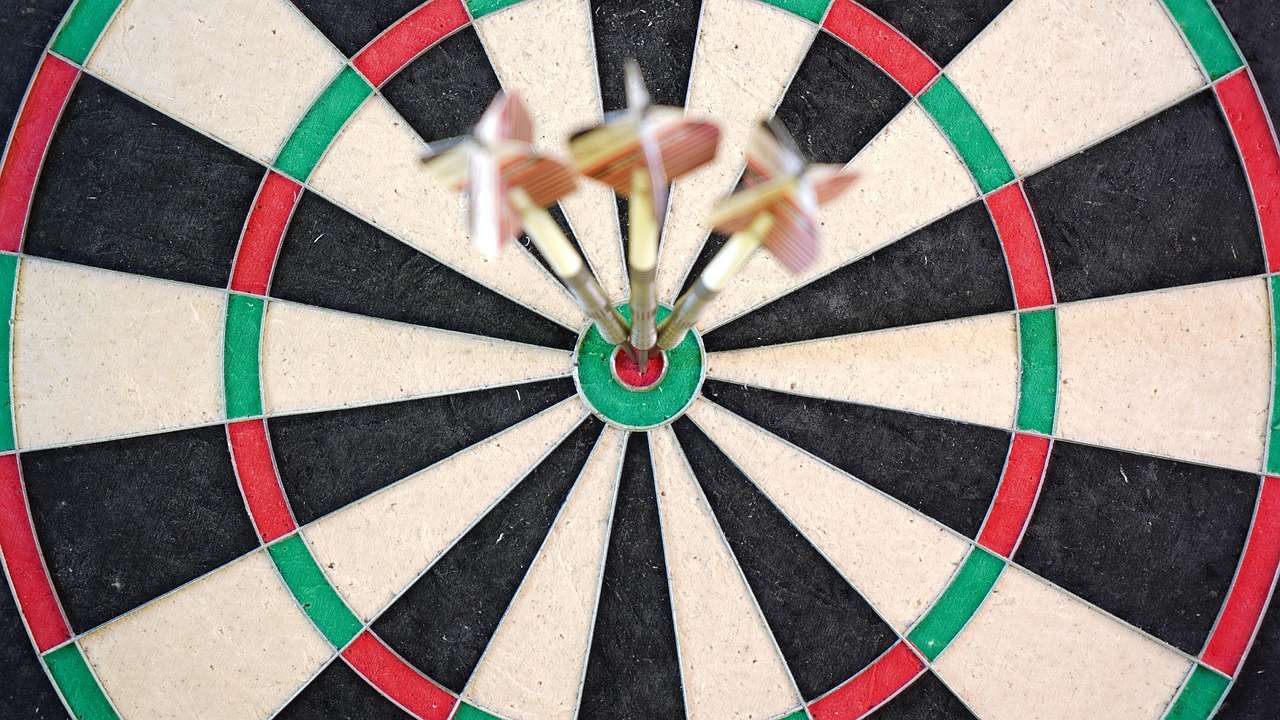
Setting Up Your Dartboard: Proper Dimensions and Height
Proper setup is essential for fair and enjoyable gameplay. Getting the measurements right ensures everyone is playing on a level playing field. Here’s dart board how to play the right way, starting with the setup:
Official Dartboard Dimensions
- Dartboard Height: The center of the bullseye should be exactly 5 feet 8 inches (1.73 meters) from the floor.
- Throwing Distance (Oche): The distance from the face of the dartboard to the throwing line (oche) should be 7 feet 9 1/4 inches (2.37 meters) for steel-tip darts. For soft-tip darts, the distance can vary slightly.
- Diagonal Distance: Measuring from the bullseye to the oche, the diagonal distance should be 9 feet 7 3/8 inches (2.93 meters).
Make sure your darts oche board is securely mounted to the wall. Use a dartboard surround to protect your wall from stray darts.
The Rules of Darts: Basic Gameplay
The most common version of darts is 501. Here’s a breakdown of the rules:
Starting the Game
- Each player starts with a score of 501.
- Players take turns throwing three darts at a time.
- The goal is to reduce your score to exactly zero.
Scoring
- The score for each round is the sum of the points scored by the three darts.
- The score is subtracted from the player’s remaining total.
Finishing the Game (Doubling Out)
To win, a player must reach exactly zero, and the final dart thrown must be a double (hitting the double ring) or the bullseye (which counts as a double 25). This is known as doubling out. If a player goes below zero, or reaches one, their score for that round doesn’t count, and their score reverts to what it was at the start of that turn. If you are interested in the different approaches to darts finishing, there are many resources available online to help you learn more.
Example Turn
Let’s say a player has a score of 40 remaining. They could win by hitting a double 20. If they hit a single 20, they would have 20 remaining. They could then hit a double 10 on their next turn to win.
Consider exploring different darts world championship games to see these rules in action at the highest level.
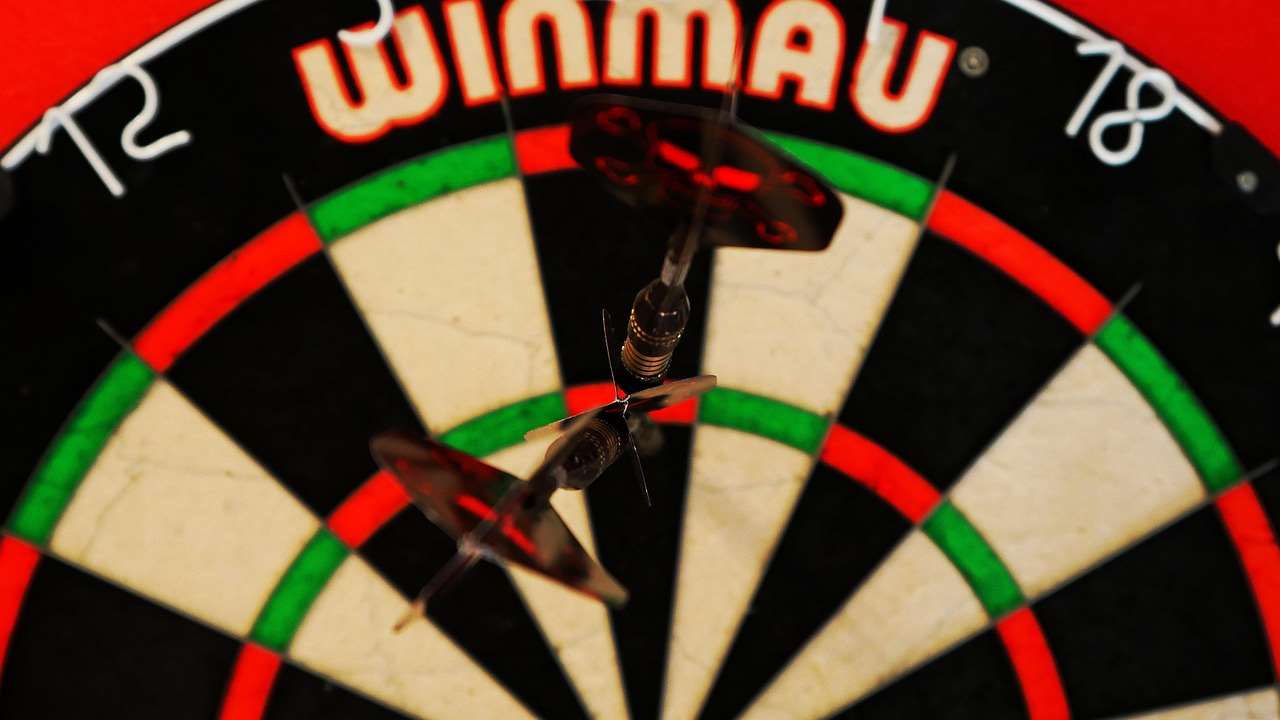
Dart Board How To Play: Basic Dart Throwing Technique
While natural talent plays a role, good technique can significantly improve your accuracy. Here are some tips on dart board how to play the game with better form:
Stance
- Stand comfortably at the oche, with one foot slightly forward.
- Most players stand with their throwing-side foot forward, but find what feels most natural to you.
- Maintain a balanced and stable stance.
Grip
- Hold the dart gently but firmly. Avoid squeezing it too tightly.
- Experiment with different grips to find what works best for you. Common grips include the two-finger grip, three-finger grip, and four-finger grip.
Aiming
- Focus your eyes on the target you want to hit.
- Visualize the dart flying directly to that target.
Throwing Motion
- Keep your upper arm relatively still.
- Use your forearm to propel the dart forward.
- Follow through with your hand after releasing the dart.
- A smooth, consistent throwing motion is key to accuracy.
Consider using a darts scorekeeper app to track your progress and identify areas for improvement (https://dartcounterapp.com/).
Darts Strategy: Improving Your Game
Darts isn’t just about throwing accurately; it’s also about strategy. Here are some basic strategic considerations:
Target Selection
- Prioritize high-scoring targets like the 20 and the 19.
- When setting up a finish, aim for numbers that have doubles readily available (e.g., 32 (double 16), 40 (double 20)).
Leaving a Finish
The goal is to leave yourself with an easy double to finish the game. For example, if you have 41 remaining, aiming for the 1 might leave you with 40, which is a double 20. If you have 33 remaining, aim for the 1 to leave yourself with double 16, a common out.
Knowing Your Averages
Understanding your average score per three darts can help you make better decisions and track your improvement.
Even if you are just starting out, understanding the possibility of a darts perfect score can give you something to aspire to.
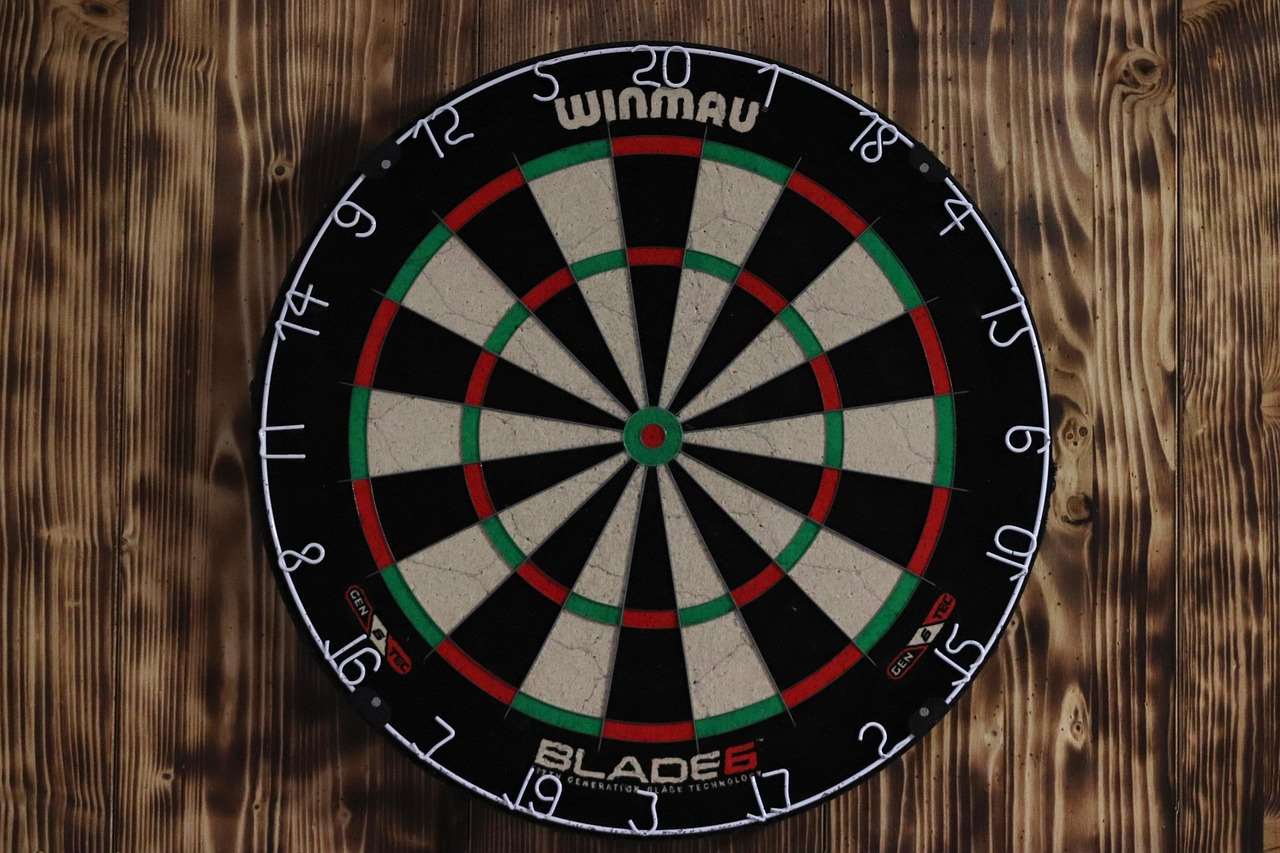
Choosing the Right Darts
The type of darts you use can impact your performance. Here’s what to consider:
Dart Weight
Darts typically range from 20 to 26 grams. Lighter darts are often preferred by beginners, while more experienced players might prefer heavier darts. Experiment to see what weight feels most comfortable and controllable for you.
Dart Material
Darts are typically made of brass, nickel silver, or tungsten. Tungsten darts are denser, allowing for a slimmer barrel and tighter groupings. Brass darts are the most affordable option, while nickel silver darts fall in between.
Dart Flights and Shafts
Flights affect the dart’s stability in the air. Larger flights provide more stability, while smaller flights are faster. Shafts connect the flight to the barrel. Experiment with different lengths and materials to find what works best for your throwing style.
Practicing Darts: Drills and Exercises
Consistent practice is key to improving your dart game. Here are some drills and exercises you can try:
Around the Clock
Start at the 1 and try to hit each number in sequence, moving around the board clockwise. This drill helps improve your accuracy on all sections of the board.
20s and Trebles
Focus on hitting the 20 segment repeatedly. Once you’re comfortable, try aiming for the treble 20. This drill helps improve your accuracy on high-scoring targets.
Doubles Practice
Practice hitting different doubles around the board. Start with the easier doubles (e.g., double 20, double 10) and gradually move on to the more difficult ones.
If you’re searching for darts near by you, consider searching for local dart leagues and tournaments to test your skills.
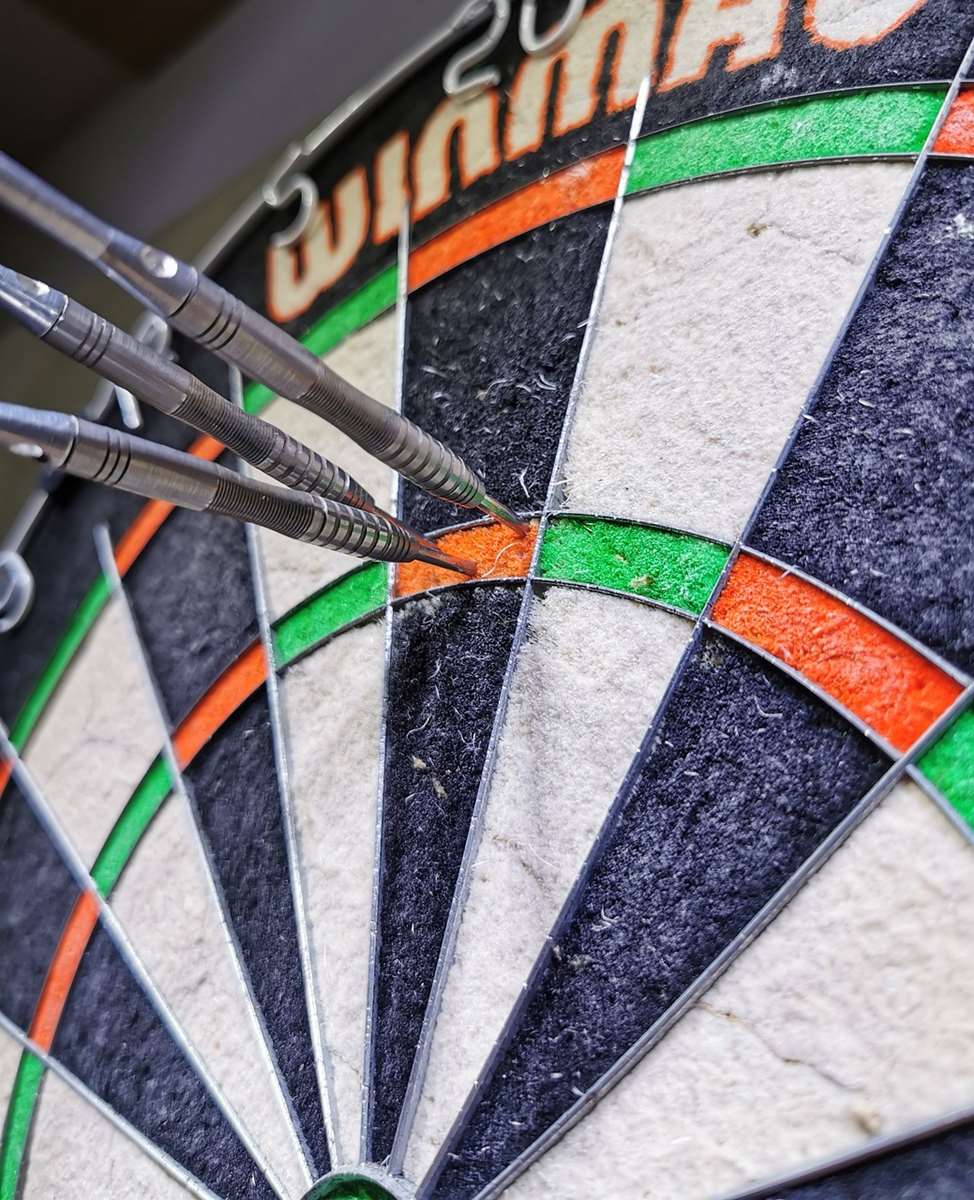
Common Mistakes to Avoid
Avoid these common mistakes to improve your dart game:
- Inconsistent Stance: Maintain a stable and consistent stance each time you throw.
- Gripping the Dart Too Tightly: Relax your grip to allow for a smoother release.
- Not Following Through: Complete your throwing motion by following through with your hand.
- Focusing on the Score Instead of the Target: Keep your eyes on the target you want to hit.
Advanced Techniques
Once you’ve mastered the basics, you can explore some advanced techniques:
Mental Game
Darts is a mental game as much as it is a physical one. Stay focused, positive, and confident in your abilities.
Reading Your Opponent
Pay attention to your opponent’s throwing style, tendencies, and reactions. This can give you valuable insights and help you adjust your strategy.
Calculating Outs Quickly
Develop the ability to quickly calculate the best way to finish a leg, taking into account the remaining score and the doubles available.
Maintaining Your Dartboard and Darts
Proper maintenance will prolong the life of your dartboard and darts:
Rotating Your Dartboard
Regularly rotate your dartboard to distribute wear evenly. This will prevent certain sections from becoming overly worn and extend the life of the board.
Cleaning Your Dartboard
Periodically clean your dartboard with a soft brush to remove dust and debris. Avoid using water or harsh chemicals.
Sharpening Your Darts
Sharpen your dart points regularly to ensure they stick properly in the board. Use a dart sharpener or sharpening stone.
For instance, if you consider purchasing cyeelife darts, remember to maintain them regularly for optimal performance.
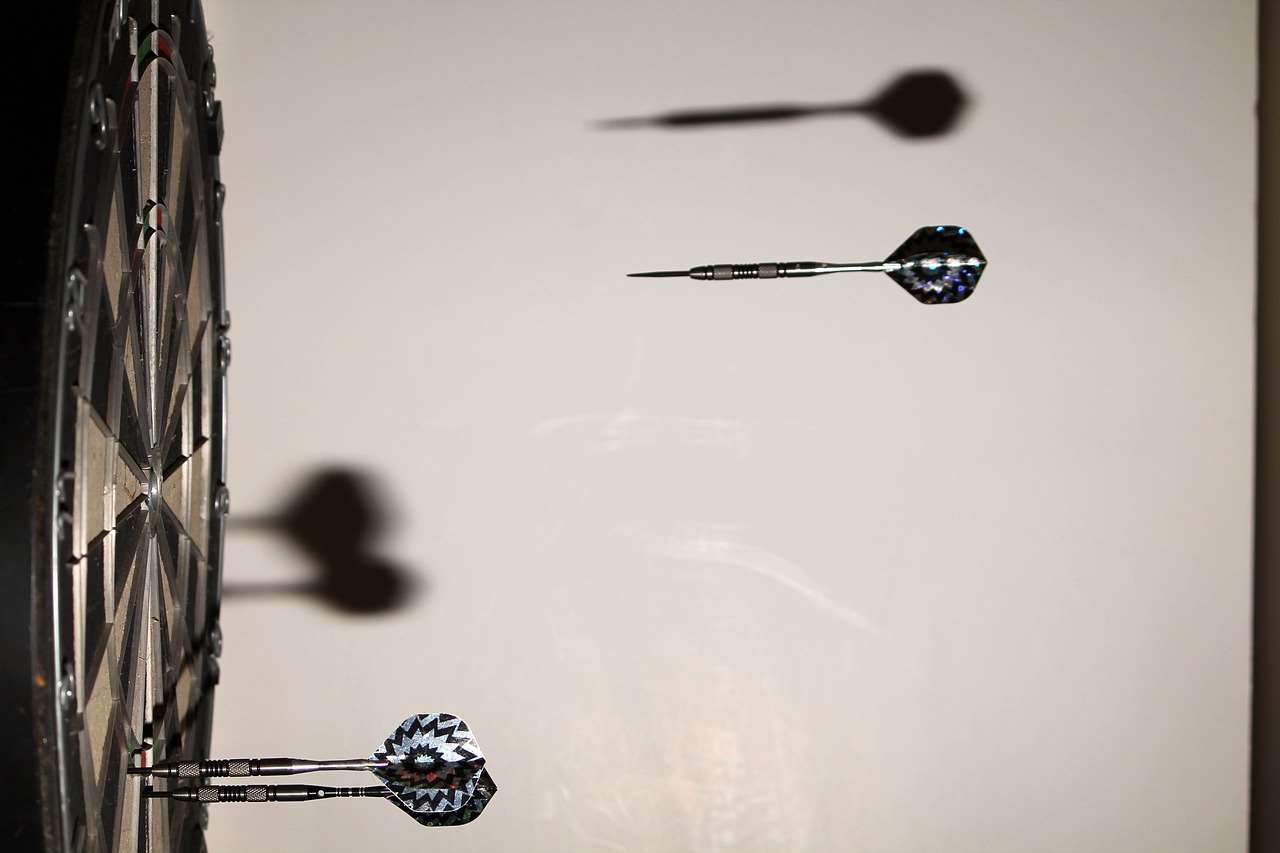
Conclusion: Mastering the Game of Darts
Learning dart board how to play involves understanding the setup, rules, basic techniques, and some strategy. With consistent practice and attention to detail, you can improve your skills and enjoy this engaging game. Remember to focus on proper setup, consistent technique, strategic target selection, and regular practice. Now that you have a solid foundation, grab your darts and start practicing. Aim for that bullseye!
Hi, I’m Dieter, and I created Dartcounter (Dartcounterapp.com). My motivation wasn’t being a darts expert – quite the opposite! When I first started playing, I loved the game but found keeping accurate scores and tracking stats difficult and distracting.
I figured I couldn’t be the only one struggling with this. So, I decided to build a solution: an easy-to-use application that everyone, no matter their experience level, could use to manage scoring effortlessly.
My goal for Dartcounter was simple: let the app handle the numbers – the scoring, the averages, the stats, even checkout suggestions – so players could focus purely on their throw and enjoying the game. It began as a way to solve my own beginner’s problem, and I’m thrilled it has grown into a helpful tool for the wider darts community.